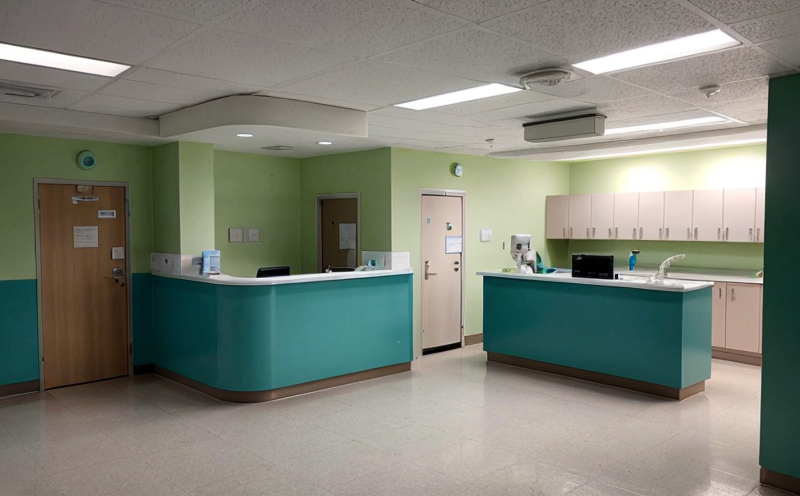ASTM E2617 Validation of Microbiological Methods in Hospitals
The ASTM E2617 validation process is a critical step in ensuring that the microbiological methods used in hospitals are accurate, reliable and suitable for their intended use. This service plays an essential role in maintaining high standards of patient care by validating the performance characteristics of these methods as defined in ASTM E2617.
The primary goal of this validation is to ensure that the methods can consistently produce results within specified limits when used under controlled conditions. This process involves several key steps including selecting appropriate test samples, establishing suitable recovery levels, and performing detailed method comparisons to evaluate precision, accuracy, and robustness.
ASTM E2617 specifies a series of tests designed to assess various performance attributes such as linear range, detection limit, quantification limit, reproducibility, and specificity. Each attribute is crucial for ensuring the reliability of microbiological results in healthcare settings. By conducting these validations, laboratories can demonstrate their capability to deliver accurate and reliable test results.
During validation, we carefully select a variety of microorganisms that are relevant to hospital environments, such as Bacillus atrophaeus, E. coli, and other clinically significant pathogens. These organisms serve as surrogates for real clinical samples, allowing us to simulate the conditions under which these methods will be used in actual practice.
The validation process also involves extensive method comparisons between different techniques or brands of test kits to ensure that they produce consistent results across various platforms. This step is particularly important when evaluating newer technologies against established standards.
Once all required tests have been completed, detailed reports are generated summarizing the performance characteristics of each validated method. These reports provide critical information about the limits of detection and quantification as well as any limitations associated with specific applications. The data presented in these documents helps healthcare facilities make informed decisions regarding which methods to implement based on their unique needs and priorities.
By adhering strictly to ASTM E2617 standards, we ensure that our validation process meets the highest quality assurance criteria. This commitment to excellence guarantees that every method validated through this procedure will deliver consistent, accurate results – contributing significantly to improved patient outcomes and overall healthcare quality.
Eurolab Advantages
At Eurolab, we pride ourselves on offering comprehensive services tailored specifically for the demanding needs of hospital environments. Our team of experts brings together extensive experience in microbiology and regulatory compliance to provide robust solutions that meet or exceed industry expectations.
- Comprehensive Expertise: With decades of combined experience in both academic research and applied laboratory settings, our staff possess deep knowledge across all aspects of microbiological testing.
- State-of-the-Art Facilities: Our modern laboratories are equipped with advanced instrumentation capable of handling complex analyses required for ASTM E2617 compliance.
- Dedicated Support: From initial consultation through final report delivery, our dedicated clients receive personalized attention throughout the entire process.
- Global Recognition: Our certifications and accreditations are recognized worldwide ensuring credibility in global markets.
This combination of expertise, state-of-the-art facilities, and unwavering commitment to quality sets Eurolab apart as a leader in providing top-tier services for ASTM E2617 validation.
Quality and Reliability Assurance
To ensure the highest levels of quality and reliability, we follow stringent protocols throughout every stage of the validation process. Key measures include:
- Standard Operating Procedures (SOPs): Rigorous adherence to predefined procedures guarantees consistency across all samples processed.
- Detailed Documentation: Comprehensive records are maintained for each test run allowing easy tracking and review of results over time.
- Internal Audits: Regular internal reviews help identify potential areas for improvement ensuring continuous quality enhancement.
- External Reviews: Periodic external audits by recognized bodies verify our compliance with established standards like ASTM E2617.
These rigorous practices ensure that every validation conducted through this service remains reliable and repeatable, contributing to improved healthcare outcomes for patients.
Use Cases and Application Examples
The ASTM E2617 validation process has numerous applications within hospital settings including:
- Antimicrobial Susceptibility Testing: Ensuring that antibiotics prescribed are effective against the pathogens causing infections.
- Infection Control: Identifying potential sources of nosocomial infections and tracking trends over time.
- New Technology Evaluation: Assessing newly developed diagnostic tools before they reach clinical use.
- Clinical Trials: Supporting the development and approval of new therapeutic agents by providing reliable data on their efficacy.
By validating microbiological methods according to ASTM E2617 guidelines, hospitals can ensure that they are using cutting-edge technology while maintaining strict adherence to regulatory requirements. This approach fosters trust among patients and stakeholders alike knowing that the laboratory practices meet international standards for accuracy and reliability.





